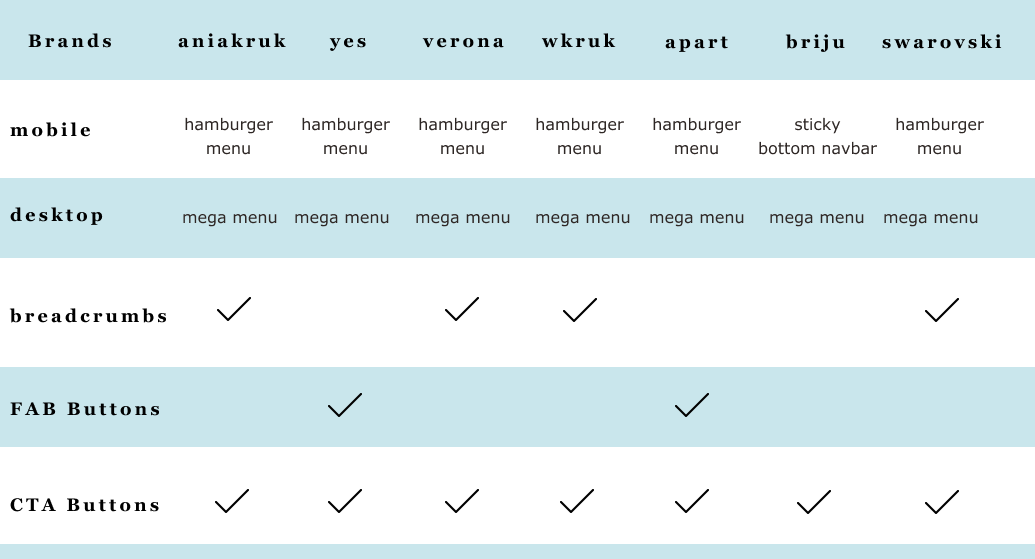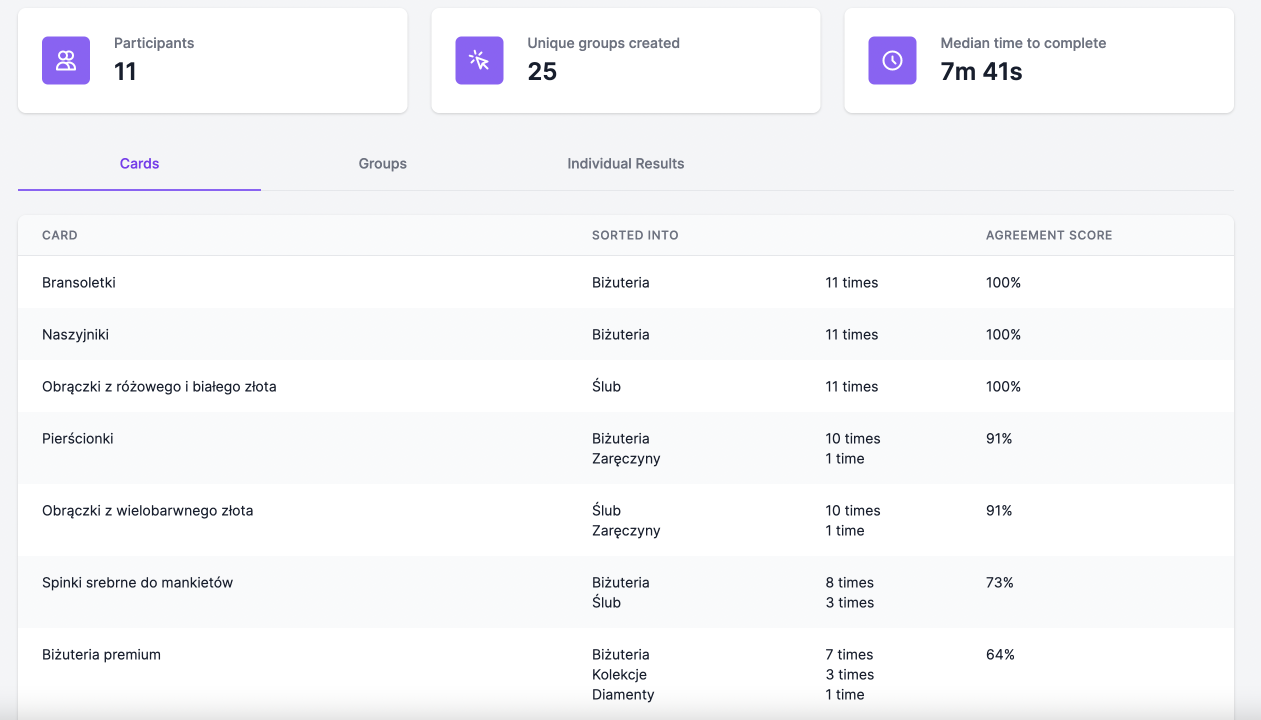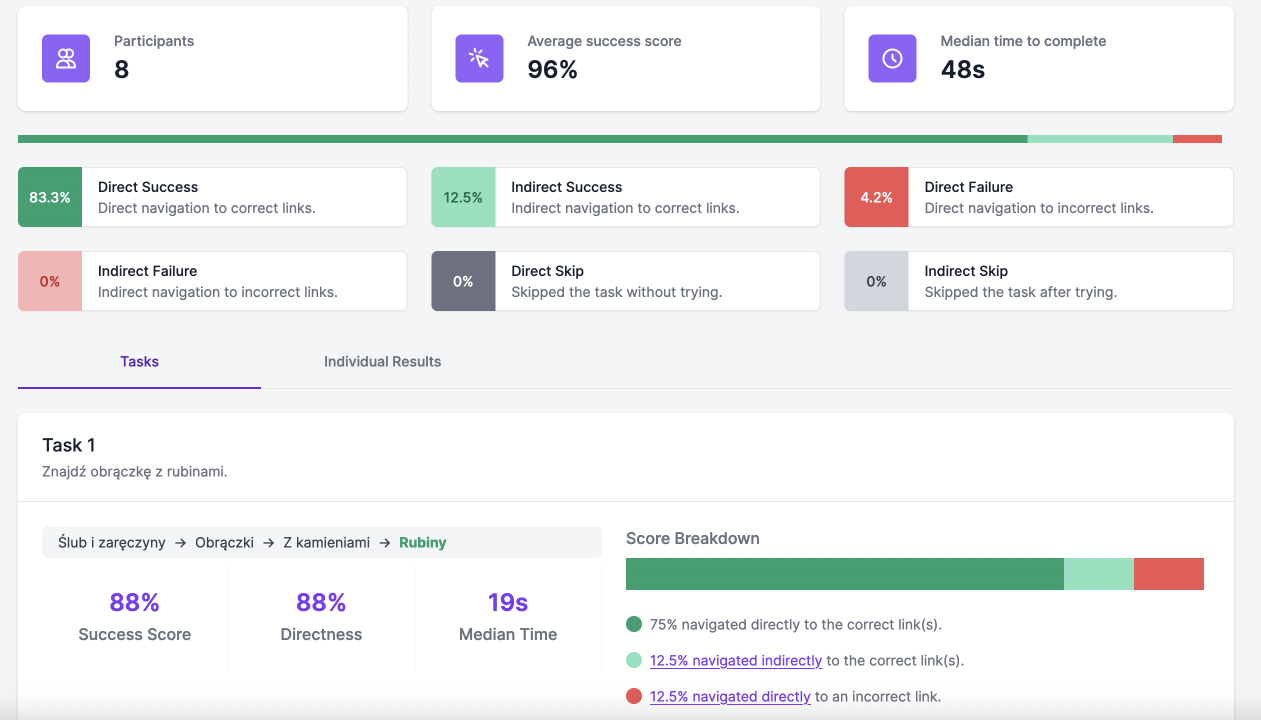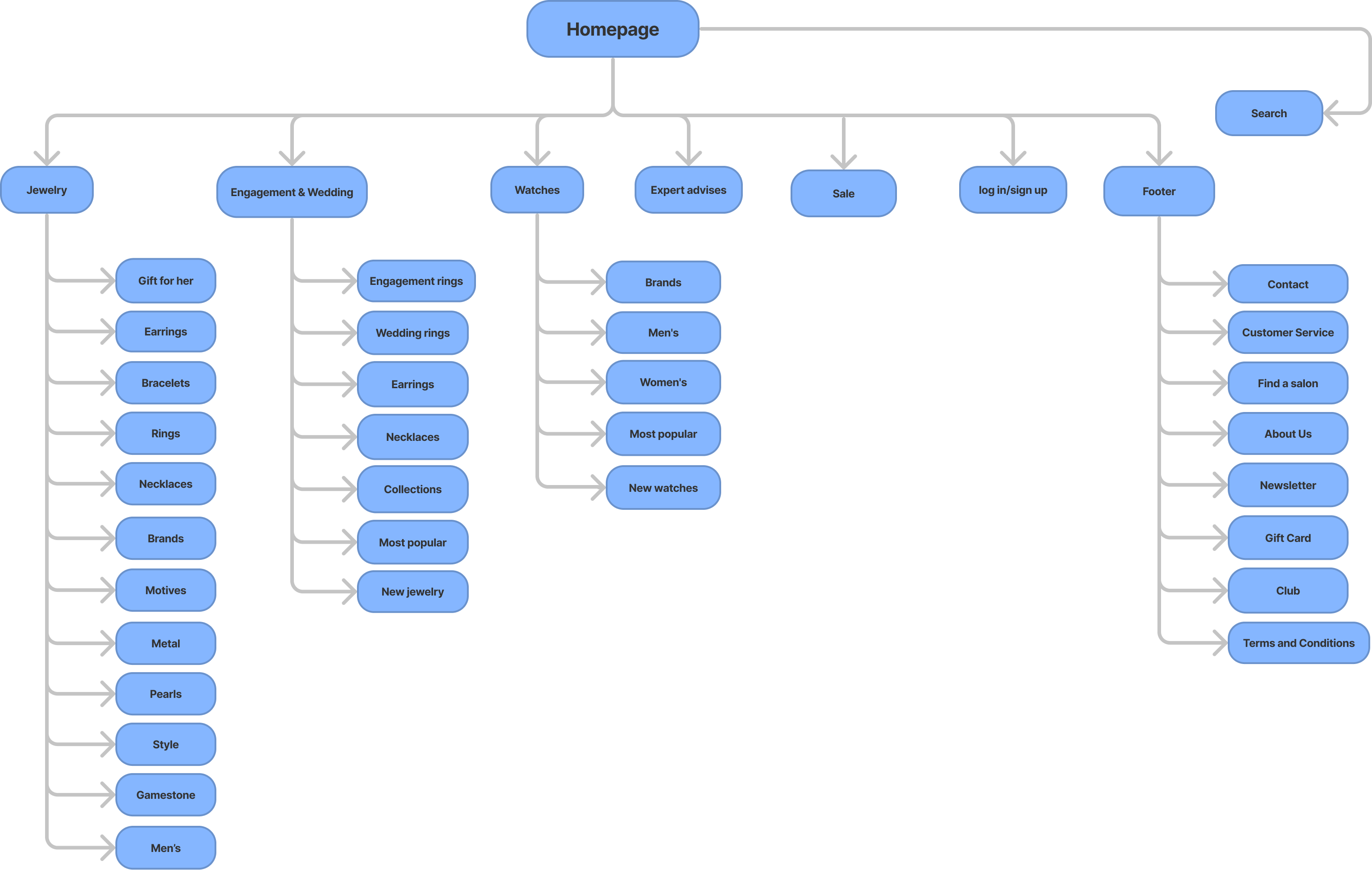Information architecture for a jewelry store
Project type
Individual project
Deliverables
Navigation tree
Duration
1 day
Tools
FigJam, Notion, Ux Metrics
THE CHALLENGE
Creating navigation tree for jewelry online store.
DISCOVER
Understand user goals
At first, I wondered what will users do on the website and what are their goals?
- search for and buy jewelry and watches
- look for detailed information about jewelry in the form of articles and product descriptions
- will be looking for new collections
- want to look for jewelry for special occasions such as engagements, gifts
- will want to find sales
- will look for matching pieces to jewelry they already own, collections
- they will first choose the product category e.g. earrings, bracelets
- will search for products by selecting the type of raw material, e.g. gold, silver, diamond
- want to buy a gift card
- want to follow trends and inspiration
- want to find a stationary store
- want to create their own account in which: want to keep adress information, have a collection of favorite products, want to have information about the loyalty program, will want to have information about recommended products or special promotions
Competitive analysis
of product findability
of product findability
The next step was to explore how the user can find the required product.
For this reason, I started to analyze the competitors' websites. I chose 7 popular brands that sell jewelry.
I have included my observations in the table.
For this reason, I started to analyze the competitors' websites. I chose 7 popular brands that sell jewelry.
I have included my observations in the table.

Competitive analysis
for navigation
for navigation
Now I've started thinking about the available navigation methods that are used
by the most popular jewelry sellers.
by the most popular jewelry sellers.

Defining the content
and assortment
of the store
and assortment
of the store
As a next step, I thought about cards. The cards will be sorted by the research participants.
The sample cards that we will give to the study participants will be used to find the answers to our questions.
They will help you understand how users define and understand the category.
And where users expect to find the information they are looking for.
As well, it's supposed to show how users name content. Perhaps they will create their own terms
The sample cards that we will give to the study participants will be used to find the answers to our questions.
They will help you understand how users define and understand the category.
And where users expect to find the information they are looking for.
As well, it's supposed to show how users name content. Perhaps they will create their own terms
Cards - single items
Organization
and labels
and labels
In the next stage, I prepared materials for the testing, which will answer the question
of how users group the products and services offered in the store.
In this way, we can discover which products users think have common features and criteria.
In which departments users are looking for particular products.
of how users group the products and services offered in the store.
In this way, we can discover which products users think have common features and criteria.
In which departments users are looking for particular products.
Categories - group
of products and services
of products and services
USER RESEARCH
It is a good idea to conduct the study several times. One time with a few users,
then reflect on the conclusions.
Next test should then be conducted to confirm or refute our changes.
It is very important that users have some general knowledge of the field we are researching.
then reflect on the conclusions.
Next test should then be conducted to confirm or refute our changes.
It is very important that users have some general knowledge of the field we are researching.
Hybrid card sorting
During the user testing I conducted with the tool ux metrics, users assigned cards to categories.
The cards and categories were given to the users by me. Because the survey was in hybrid form,
users were able to create new cards or categories that they thought were missing.
The cards and categories were given to the users by me. Because the survey was in hybrid form,
users were able to create new cards or categories that they thought were missing.

Conclusions
- users added new groups e.g.: company, jewelry properties, expert advises, brand, manufacturers, style
- users were not able to associate the property: water resistance with watches,
therefore water resistance should be included in the filters for watches - a large part of the users matched the ring size to the customer service
- users do not distinguish between theme and collection
- users place watches in jewelry and not in a separate category, so there should be a watch subcategory created
- users associated the category of vouchers and gift cards with becoming a member of a club
- users categorize bestsellers and novelties as a subcategory in particular categories e.g. wedding,
so there should be a subcategory of novelties for particular categories - users are looking for brands in the main categories
- users had problems with assigning the advice item, so there should be a separate tab for expert advice
- diamonds are directly associated with engagement
- users are confusing the engagement and wedding categories, so creating one categoryee
Hierarchy tests
Hierarchy testing involves giving users short tasks to complete. They are supposed to find a product or a category.
They search in the hierarchy tree given by us. At the end, the program presents a report.
There is a information if the user found the product at all, how long it took
and what was the way to find it.
They search in the hierarchy tree given by us. At the end, the program presents a report.
There is a information if the user found the product at all, how long it took
and what was the way to find it.

Conclusions
- study did not confirm that the bestseller card should be a separate category
- users do not understand the "mixed materials" category
- the creation of a separate tutorial category meant that users quickly completed the task correctly
DELIVER
Navigation tree
The research I conducted allowed me to build the navigation tree posted below.
